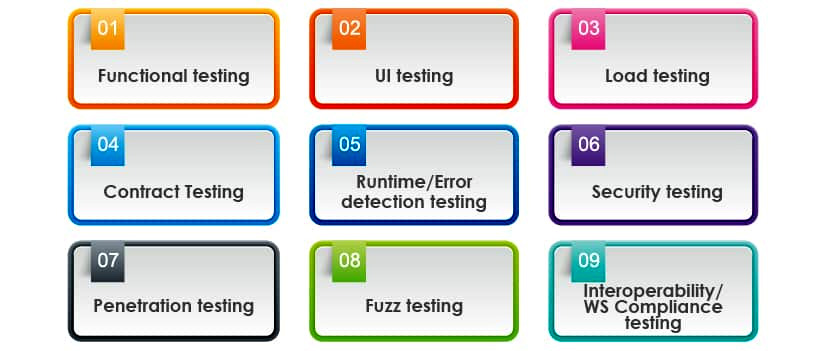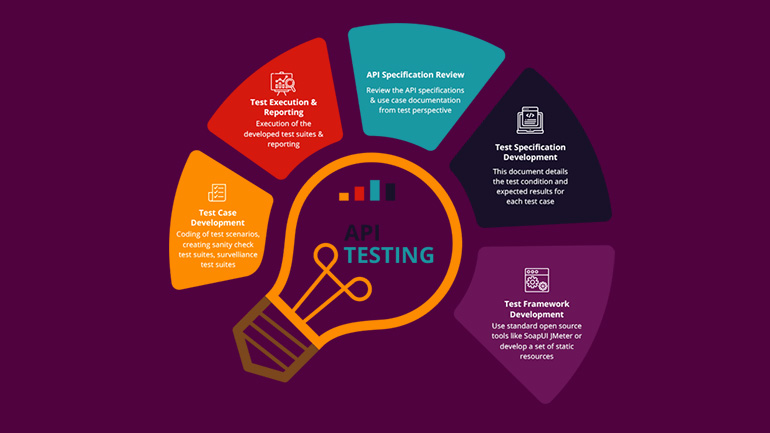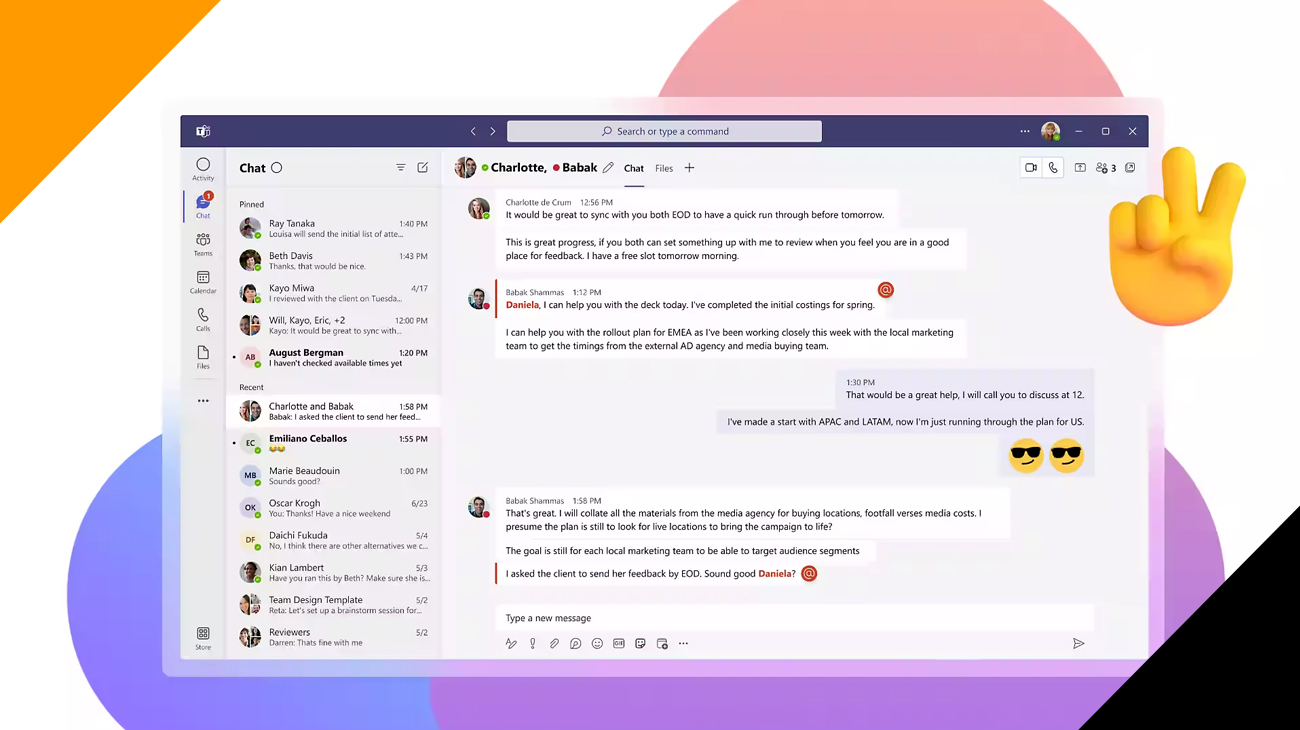How does API Testing work?
APIs have been around since the 1960s, long before personal computers and the Internet were invented. The digital experiences we have every day would not be possible without APIs. APIs are in charge of everything from data-rich marketing campaigns to checking the weather on a smartphone app. The process of testing these APIs before they are used is referred to as ‘API Testing.
In this article, we will explore:
- What is API?
- What is API Testing?
- How to approach API testing
- Types of API tests
- Why is API testing important?
- Benefits of API testing
- API testing tools
- Examples of API tests
- Best practices for API testing
What is API?
Application Programming Interface (API) is a computer interface that allows two different software programs (s) to communicate and share data. Between two software systems, an API describes the types of requests that may be made, how they can be made, the data formats used, etc. A software system that performs an API contains numerous functions/subroutines that another software system can achieve.
What is API Testing?
A type of software testing that examines an application program interface (API) to ensure that it meets its functional, security, performance, and reliability i.e., reliability issues requirements. The tests are run either on the API itself or as part of continuous integration testing. An API is a piece of middleware code that allows two applications to communicate. The code also specifies how an application communicates with the operating system (OS) or other programs.
The three layers that most applications contain are:
- Data layer,
- Service layer (the API layer)
- Presentation layer (the user interface (UI) layer)
The API layer contains the application’s business logic, which describes how users can interact with the app’s services, functions, and data. API testing examines the business logic and the application’s and data replies’ security. An API test is typically carried out by sending requests to one or more API endpoints and comparing the results to what is expected. API testing is frequently automated and utilized for a continuous testing process by DevOps, quality assurance (QA), and development teams (project team).
How to Approach API testing
What are the methods in API testing?
The testing of an API should start with a clearly defined program scope and a thorough grasp of how the API is expected to perform. The following are some questions that testers should think about:
- What testing endpoints are available?
- What are the expected response codes for successful requests?
- For unsuccessful requests, what response codes should be expected?
- Which error message should you expect to see in the body of a failed request?
When these criteria are known, testers can start using various testing methodologies. Test cases for the API should also be written. These test cases specify the conditions or variables that testers will use to verify whether a system functions correctly and responds appropriately. Testers can run the test cases after specified and compare the expected and actual results. The test should look at responses such as:
- reply time,
- data quality,
- confirmation of authorization (authorization checks),
- HTTP status code and
- error codes.
API testing can examine a variety of endpoints, including online services, databases, and web user interfaces. The API should be secure against potential attacks, and response time should be within an acceptable agreed-upon range. Testers should avoid failures and unexpected inputs. The API can handle the expected user traffic. Tests should be written to ensure that users cannot have an unanticipated impact on the application. The API is compatible with many browsers and devices.
Nonfunctional testing, such as performance and security, should also be analyzed during the test.

Types of API Tests
API tests can confirm that the application programming interface is functioning correctly. They range from broad to detailed examinations of the software. Here are some instances of these types of testing.
Validation testing is a testing approach that consists of a few simple queries that cover the entirety of the product. The product is the first set of questions:
- Was the right product created?
- Is the developed API the best solution for the problem it’s attempting to solve?
- Was there any serious code bloat (the creation of code that is overly long, slow, and inefficient) throughout development that would lead to the API becoming unsustainable?
The API’s behavior is the topic of the second set of questions: Is the proper data being accessed in the way it should be? Is there an excessive amount of data being accessed? Is the data being stored correctly by the API, considering the data set’s specific integrity and confidentiality requirements?
The API’s efficiency is the subject of the third set of questions:
- Is this API the most efficient and precise way to complete a task?
- Is it possible to change or remove any codebase to improve overall service and eliminate impairments?
| Functional Testing | It is a type of testing that guarantees the API does what it is designed to do. Functional tests examine certain functions in the codebase to ensure that the API operates within its expected parameters and that it can handle errors if the results fall outside of those parameters, i.e., negative tests. |
| Load Testing (API load tests) | It is a testing strategy for determining how many requests an API can handle. This test is frequently carried out after a specific unit or the entire codebase has been completed to see if the theoretical answer can also operate as a practical solution when working under a specified load. |
| Reliability Testing | Reliability testing is a testing method that ensures that the API produces consistent results and maintains a constant connection between platforms. |
| Security Testing | Security testing is frequently lumped in with penetration and fuzz testing in the more extensive security auditing process. Security testing combines elements of penetration and fuzz testing and attempts to check the API’s encryption mechanisms and access control design. The validation of permission checks for resource access and user rights management is part of security testing. |
| Penetration Testing | Penetration testing is a step forward from security testing. An individual with insufficient knowledge of the API attacks the API in this test. This allows testers to look at the attack vector from a different angle. Penetration testing attacks might be limited to certain aspects of the API, or they can target the API as a whole. |
| Fuzz Testing | Fuzz testing involves forcing large amounts of random data into a system, often known as noise or fuzz, to induce undesired behavior like a forced crash or overflow. |
Why is API Testing Important?
Why is API testing done?
User interface tests (UI testing) are inefficient when validating API service functioning, and they frequently fail to cover all of the vital parts of back-end testing. This can lead to defects being justify at the server or unit levels, which is a costly mistake that can cause a significant delay in the product’s release and often necessitates rewriting substantial sections of the actual code.
API test tool enables developers to begin testing early in the development process before the user interface is complete. The UI layer will ignore any request that fails to return the correct value at the server layer. This allows engineers to eliminate at least half of existing bugs before escalating into more significant issues. It also will enable testers to make requests that aren’t achievable through the user interface- a requirement for identifying flaws.
Many firms use Microservices for their software applications since they allow for more efficient software deployment. Each application component has its data stored with its own set of commands for dealing with it. If one portion of the app is being updated, the other app areas can continue to function normally. Since most microservices rely on APIs, API testing will become increasingly important. This is because more firms use microservices.
Unit tests (unit testing) and API tests are preferred over graphical user interface (GUI) tests in Agile contexts because they are easier to maintain and more efficient. If GUI tests keep up with the frequent changes in an Agile context, they often require extensive redesigning. API testing is also vital in Agile software development when immediate input is required to keep the process moving.
Overall, introducing an actual API testing technique into the test-driven development process can help engineering and development teams save time and money throughout the development process. Customers/ target audience gain improved services and higher-quality products from these advantages, thus enhancing their user experience.
Benefits of API Testing

API testing ensures that platform connections are dependable, secure, and scalable. The following are some of the advantages:
- API test automation necessitates less code than GUI test automation, leading to speedier testing and cheaper total costs.
- API testing allows developers to access an app without a user interface, allowing testers to uncover faults sooner in the development cycle rather than waiting for them to escalate into larger problems. This saves money because problems may be rectified more quickly when identified early.
- API tests are technology and language-independent. Data is exchanged using JSON or XML, including HTTP requests and responses.
- When examining apps, API tests use harsh conditions and inputs. This eliminates flaws and protects the program from harmful code and brokenness.
- API testing can be used in conjunction with GUI tests. Integration tests, for example, can allow for the creation of new users within the app before a GUI test.
While API testing has a lot of advantages, it also has a lot of drawbacks. Parameter selection, parameter combination, and call sequencing are typical API test constraints. Parameter selection necessitates the validation of parameters given via API queries, which can be a time-consuming operation. However, testers must ensure that all parameter data meets the validation criteria, including the usability of acceptable string or numerical data, a defined value range, and adherence to length constraints.
Combining parameters can be difficult since each must be evaluated to see if it has issues relating to specific settings. Call sequencing is especially difficult since each call must be received precisely for the system to function correctly. This quickly turns into an issue, mainly when dealing with multithreaded apps.
API Testing Tools

Developers can design their framework or choose from a range of ready-to-use API testing tools while executing an API test. Developers can customize API tests using an API test framework because they aren’t restricted to the capabilities of a single tool and its plugins. Testers can use any library they choose for their chosen coding platform, create unique and convenient reporting standards, and include complex logic in their tests. If testers prefer to create their framework, they will need advanced coding skills.
On the other hand, API testing tools offer user-friendly interfaces with low coding requirements, making it possible for even inexperienced developers to deploy tests. Unfortunately, the tools are frequently built to assess general API flaws rather than difficulties unique to the tester’s API.
API testing tools are accessible in a wide range of price points, from commercial subscriptions to open source options. The following are some examples of API testing tools:
| SoapUI | The tool is designed to test the basic functionality of SOAP and REST APIs and web services. |
| Apache JMeter | A free and open source load and functional API testing tool |
| Apigee | Google’s cloud API testing tool focuses on API performance testing (performance tests) |
| REST Assured | A Java-specific open source language that simplifies and facilitates the testing of REST APIs. |
| Swagger UI | An open source program that generates a web page that lists the APIs utilized |
| Postman | A Chrome extension that allows you to verify and automate API testing. |
| Katalon | It is an open source tool that aids in the automated testing of user interfaces. |
Examples of API Tests
What is API testing with examples?
While API testing has numerous applications, two kinds of tests can be conducted to ensure that the API is giving the desired results. A user is prompted to log in when they open a social media app, such as Twitter or Instagram. This can be done independently, through the app, Google, or Facebook. This indicates that the social media app has an agreement in place with Google and Facebook to access some amount of user data previously provided to these two sources. The social media app must then go through an API test to guarantee that it can work with Google and Facebook to pull the information needed to enable the user login access.
If the user then decides to book a flight and pay with a third-party payment service, such as PayPal, API tests are required. To ensure that the payment service and travel booking systems can appropriately interact, process the payment, and keep the user’s vulnerable data safe throughout the process.
Best Practices for API Testing

API testing best practices include:
- Group test cases by category when defining them.
- Include the parameters you’ve chosen in the test case itself.
- To achieve complete test coverage, create test cases for every possible API input combination.
- Keep an eye on the API in production, reuse, and repeat test cases.
- Use manual and automated tests to get better, more reliable findings.
- When testing the API, keep track of what works and what doesn’t.
- To test the system’s stress, API load testing should be employed.
- Failures in APIs should be tested. The API should be thoroughly tested to ensure that it continuously fails to identify errors. Tests should be repeated until a failure output is obtained.
- Call sequencing should be done with a well-thought-out strategy.
- Prioritizing API function calls will make testing easier.
- Use high-quality, easy-to-understand documentation and automate the documentation development process.
- If possible, keep each test case self-contained and independent of dependencies.
Additional Information on API Testing

- Testing for security includes determining what form of authentication is necessary and whether sensitive data is encrypted over HTTP or both.
- Regression testing is a type of software testing that verifies an application continues to work as anticipated after any code revisions, updates, or improvements.
- Integrated development environment (IDE) is a tool that incorporates popular developer tools into a single graphical user interface for developing programs (GUI).
The three primary issues in Web API testing are:
- Parameter Combination
- Parameter Selection
- Call Sequencing
Follow the steps here to compile and run any JavaScript program online using your favorite browser without installing anything on your computer.
Step 1: Use a text editor to type your source.
Step 2: To get the output, click Run.
Setting Up A Test Environment For APIs

API Testing differs from other software testing methods in that there is no GUI. Still, one must build up an initial environment that executes API with a specified set of parameters and then checks the test result. Consequently, setting up a testing environment for API automation testing appears to be a bit difficult. The database and server should be set up to meet the application’s needs. After the installation is complete, the API Function should verify that the API is operational.
API Testing Test Cases Are Based On:
- Return value based on input condition: it’s simple to test because the input can be described, and the outcomes can be verified.
- Does not provide any information: The system’s API behavior must be examined when there is no return value.
- Activate another API/event/interrupt: If an API’s output causes an event or an interrupt, the events and interrupt listeners should be recorded.
- Change the data structure: Updating the data structure will impact the system, and this should be verified.
- Change the following resources: If an API call updates any resources, they should be checked by accessing them.










